27 Dec Role of selenium in the health, productivity and egg quality of layers and breeders
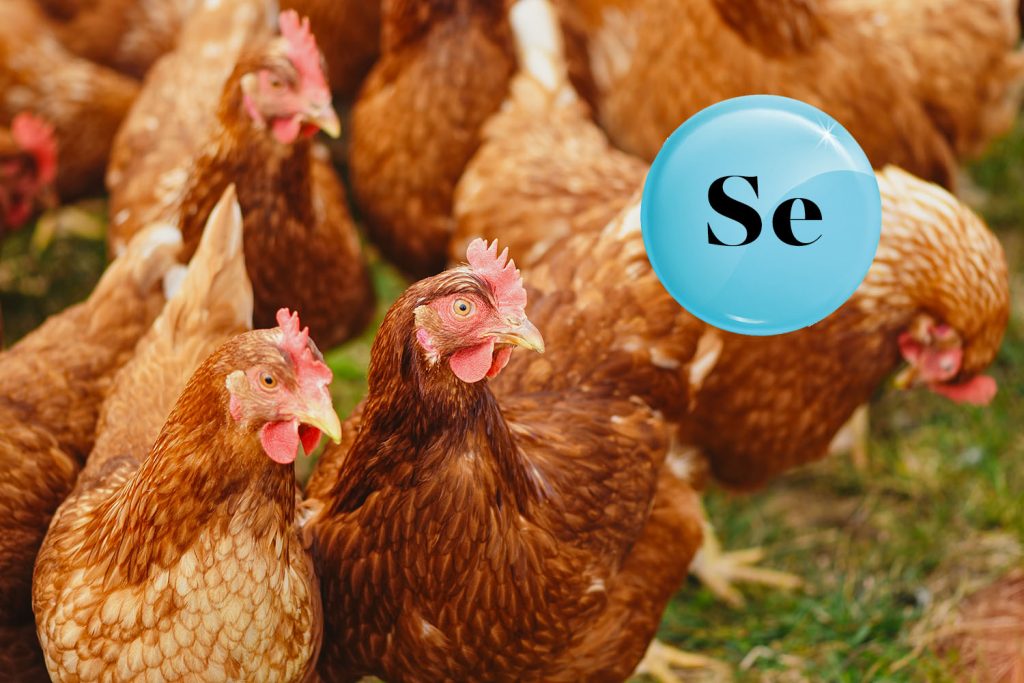
Selenium is an essential trace element involved in the regulation of several physiological functions of poultry. It is essential for the health, productivity and reproductive function of layers and breeders. In this article we will discuss the most important functions of selenium and the occasions when an extra-supplementation is necessary.
Selenium is part of the antioxidant defense system
The antioxidant defense system of the body depends on protection mechanisms to fight reactive oxygen species (ROS) and maintain optimal redox balance. We discussed the harmful effects of ROS in this article.
Vitamin E (tocopherol, TOC) is a key component of the antioxidant system. It scavenges the peroxyl radicals (ROO*) in the following reaction:
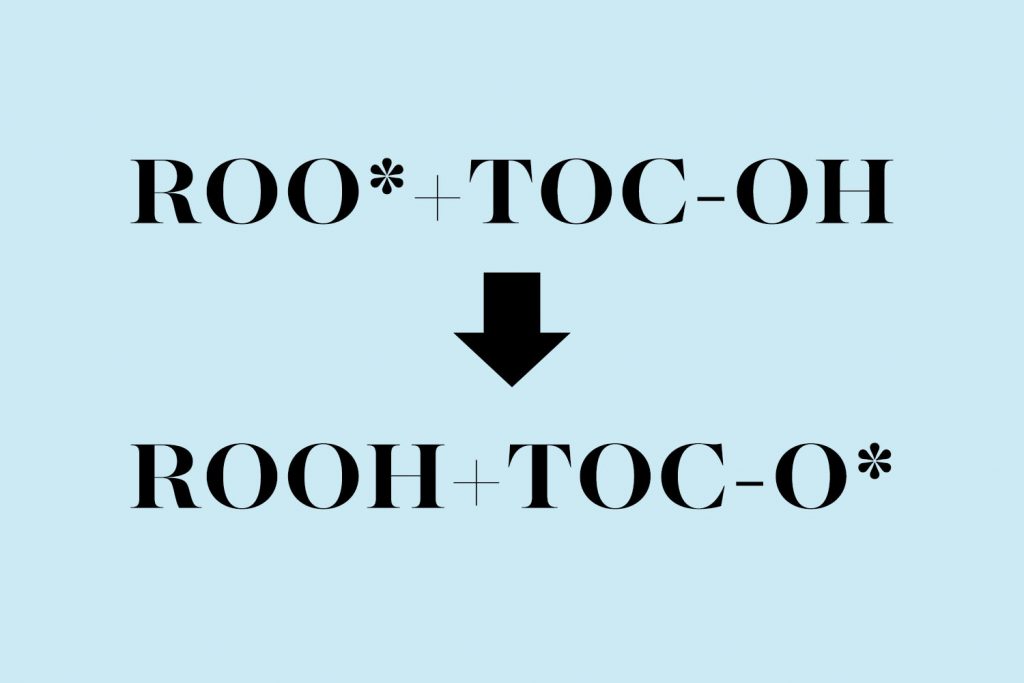
As a result of the above reaction, two compounds are produced:
- A tocopheroxyl radical (TOC-0*), that can be returned to the active form of vitamin E (TOC) through a reaction with another antioxidant, like vitamin C.
- A hydroperoxide (ROOH), that must be removed because it produces toxic effects on the cell membranes and also because it decomposes to produce new free radicals and cytotoxic aldehydes. Only the selenium-dependent enzyme glutathione peroxidase can convert hydroperoxides into non-toxic compounds, through the reaction:
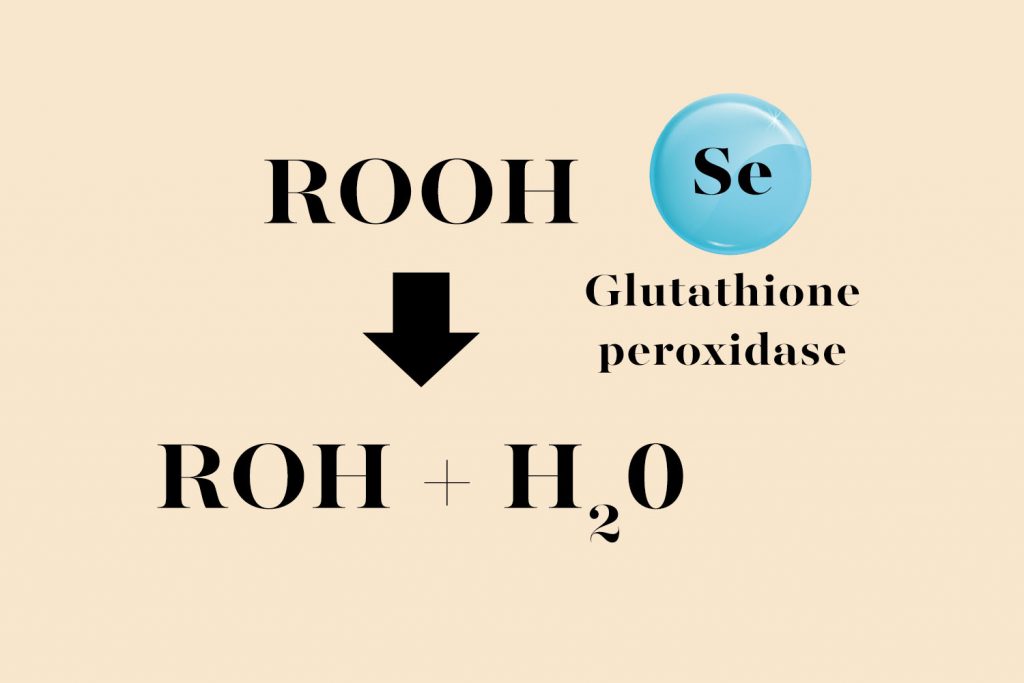
As a conclusion of the role of selenium in the antioxidant defense system, it can be said that even if vitamin E is the most known antioxidant, selenium is indispensable for the complete transformation of free radicals into non-toxic compounds.
In stressful circumstances, such as cold or hot environmental temperatures, high levels of ammonia or CO, contamination by mycotoxins, heavy metals or other toxins, oxidized fats in the feed, diseases, vaccinations, molting and feed withdrawal, there is a overproduction of free radicals that the body tries to neutralize by mobilizing its antioxidant defenses and synthesizing additional glutathione peroxidase. In this cases, it is advised to give an extra supplement of selenium and vitamin E.
Selenium is involved in both specific and nonspecific immune responses
The role of selenium in the immune system is closely related to its antioxidant activity. It is involved in both specific and nonspecific immune responses:
- Stimulates phagocytosis and chemotaxis of macrophages and neutrophils
- Boosts the proliferation and activity of T lymphocytes
- Stimulates the production of antibodies IgG and IgM
Whenever the immune system is activated, such as in case of disease or vaccination, the need of nutrients, including selenium, increases, and an extra supplementation may be advised.
Selenium is a key antioxidant during embryo development
The egg yolk contains 51-52% water, 16-17% proteins and 31-33% lipids. Among these lipids, around 65% is triacylglycerol, which is used by the embryo as a source of energy, and 28% are phospholipids that are transformed into long-chain polyunsaturated fatty acids (PUFA) and used to build cell membranes.
PUFA are very sensitive to oxidation and the embryo needs to have available a range of antioxidant defenses including natural antioxidants like vitamin E and carotenoids and antioxidant enzyme cofactors such as selenium, zinc, iron and manganese.
Incorrect temperature, humidity or carbon dioxide concentration during incubation, vertical transmitted diseases and the process of hatching itself lead to oxidative stress in the developing chick. Oxidative stress produces damages on the tissues and leads to reduced hatchability, deficient quality of the day-one-chick, higher mortality during the first week, poor productivity during the whole life of the chick or the pullet and increased susceptibility to infections.
Vitamin E, carotenoids and the metal cofactors, including selenium, are obtained from the diet of the hen. An increased supplementation of antioxidants, like selenium, in the maternal diet increases their concentration in the tissues of the developing chick and protects them from oxidative stress.
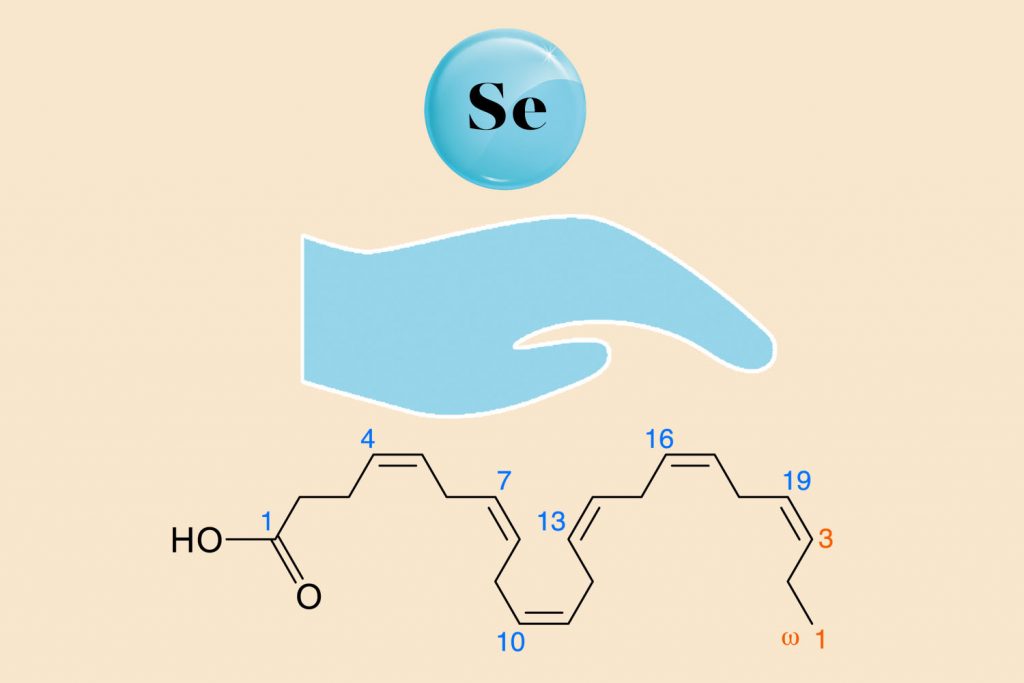
Selenium increases egg quality in layers
Experimentally, it has been proven than an extra supplementation of selenium in layers has the following benefits:
- The freshness of the egg is one of the most important parameters for consumer perception. It is determined through the Haugh Unit test, that measures the height of the egg albumen and decreases as the egg ages. Hens that have been given an extra-supplementation of selenium produce eggs that maintain a higher Haugh Unit over time.
- The vitelline membrane is a membrane located between the albumen and the yolk, designed to protect the yolk and the future embryo. A strong vitelline membrane is required for eggs intended to be processed, because it allows the proper separation of the yolk from the albumen, and prevents microbiological contamination of the yolk. Hens that have been given an extra-supplementation of selenium produce eggs with a stronger vitelline membrane.
- An extra supplementation of selenium has a positive effect on egg mass (grams of egg/day/hen), egg weight and feed conversion.
Selenium protects sperm from oxidative stress
Avian and mammal semen contain a high proportion of long-chain PUFA, that are necessary to maintain the physical properties of sperm, ensure its motility and allow the fusion of sperm during fertilization. Protecting these PUFA from oxidation is key to prevent infertility.
Avian semen has three major levels of antioxidant defense:
- Enzymes that prevent the formation of free radicals or are involved in the transformation of free radicals into non-toxic compounds, including superoxide dismutase and glutathione peroxidase (that needs selenium as a cofactor, as discussed above). This is the most important level of antioxidant defense in the avian semen.
- Chain-breaking antioxidants, such as vitamin E, that stop oxidative reactions.
- Enzymes that repair or destroy damaged molecules.
Supplementing vitamin E and selenium maintains and improves semen quality, and it is especially useful when fertility or hatchability decrease.
Products of choice
PhytoMax© is a combination of vitamins, chelated calcium, microminerals and essential oils to be given through drinking water. It is intended for layers and breeders to:
- Maintain the levels of calcium and magnesium needed for optimal egg production.
- Reinforce skeletal health.
- Prevent cage fatigue.
- Stimulate the hepatic metabolism and the immune system.
- Improve the quality of the egg and the health of day-old chicks.
- Avoid the drop of the laying rate produced by stress (management, vaccines, hot weather, etc…)
- At the start of the laying period, to boost productivity.
- Prolong the productive life of the hen.
Picture of the hen found here. Round button found here. Fatty acid found here. Hand found here.
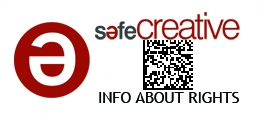
Certain health statements may not be applicable in your region.

